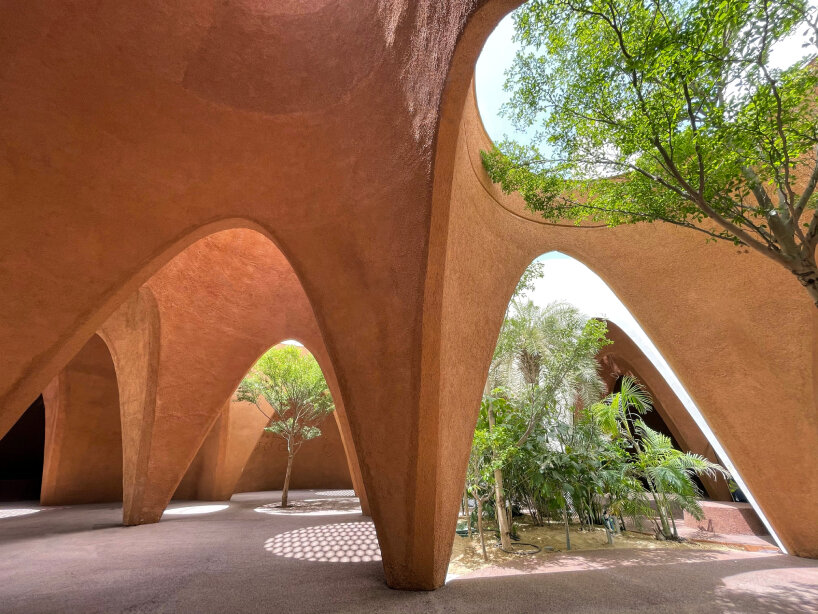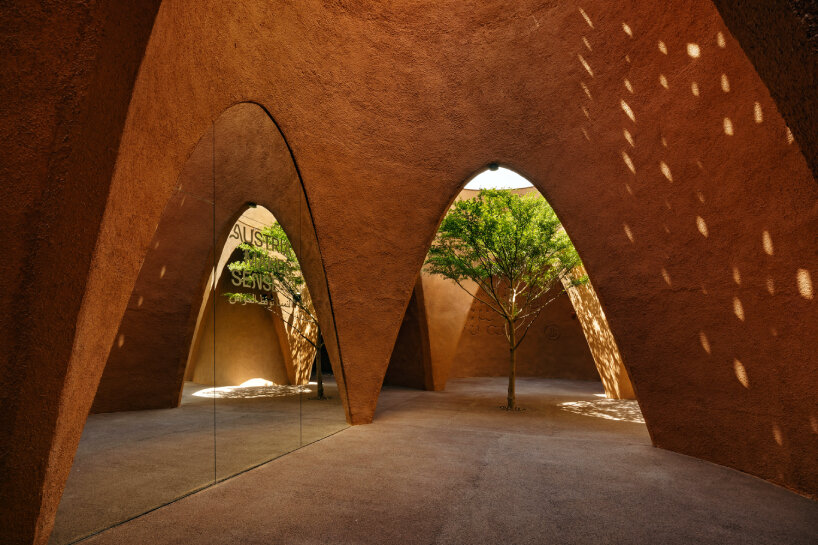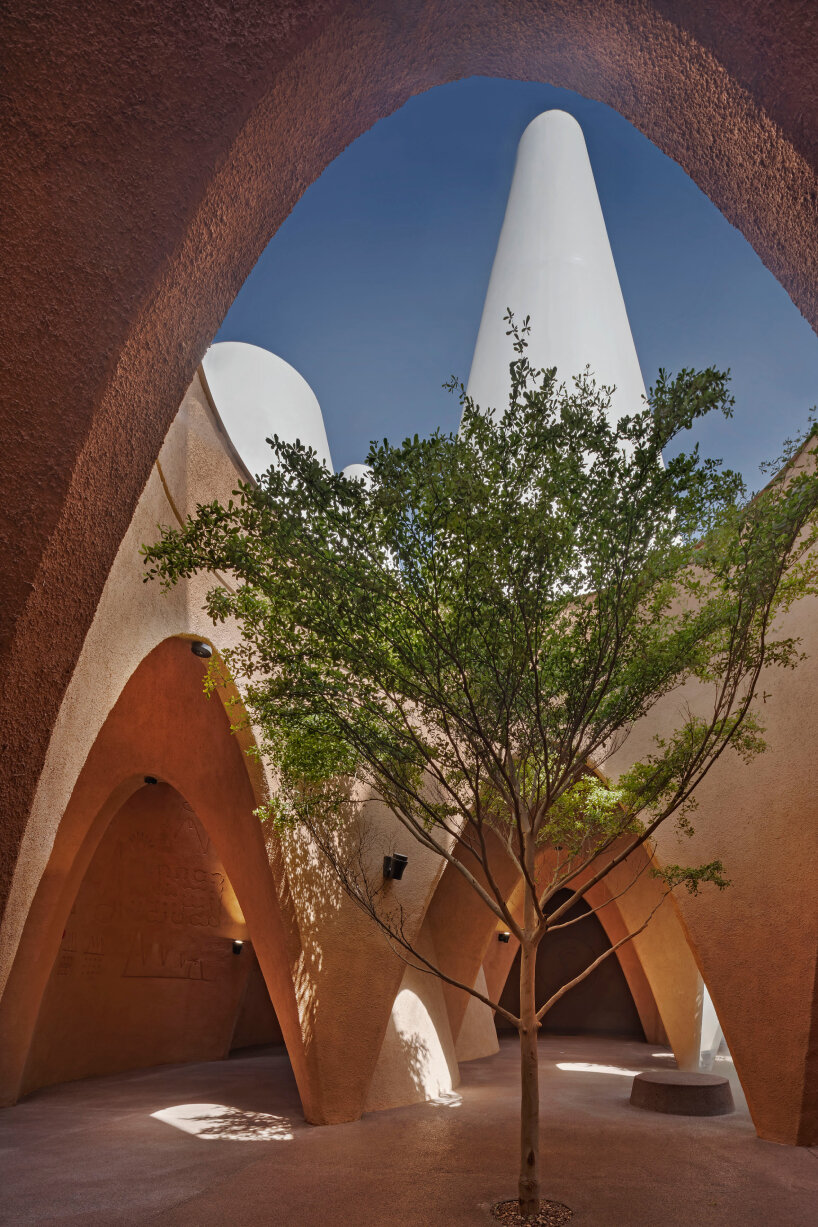cone-shaped clay buildings of austrian pavilion in expo dubai seamlessly mimic wind towers
Austrian pavilion in Expo 2020 Dubai
Vienna-based architecture office ‘querkraft architekten’ read EXPO 2020 Dubai’s slogan ‘Connecting Minds, Creating the Future’ and almost immediately, the design team thought of an Austrian pavilion that would bind the traditional roots of the Arab country with the collective advocacy toward renewable resources.
The outcome carves 38 intersecting cones for the Austrian pavilion where duality exists. The exterior of the architecture mirrors wind towers with its conical mold and a circular opening on top while the interior comes through as a serene environment through the clay plaster that visitors can touch and feel.

images courtesy of quekraft architekten | photo © Andreas Keller Fotografie (unless stated)
Querkraft architects drew their influences from the historical wind towers and climate-regulating qualities of traditional Arab clay architecture. They fused the two by building 38 cone structures at different heights and with various openings to display the Austrian EXPO pavilion.
Arranged around three green courtyards, the sequences of the room gradually transition from sunlight-filled to shadowed spaces, all while dictated by sloping arches of the entryways.
Trees and greenery slither sometimes slither and often appear as additive elements that curate an inside-out sense. As Querkraft states, ‘with the canopy of leaves rustling in the wind, over the open cones, and the omnipresent interplay of light and shadow, the building itself appeals to all senses.’

interior | photo © Kieran Fraser Landscape Design
Easy to dismantle and assemble
Conceived with the economical use of resources in mind from the onset, the Austrian pavilion in EXPO 2020 Dubai by querkraft architekten was made possible by the construction of eight different types of precast elements. After 182 days of EXPO 2020 – which took place from October 1st, 2021 to March 31st, 2022 – the cones were dismantled into their individual parts and reassembled in a new location within the Arab world.
The interplay of the local building tradition and climate engineering from Austria made it possible to dispense with conventional air conditioning technology, even in this hot desert climate. ‘The energy requirement has been reduced by more than 70 percent compared to buildings of similar type and use. The querkraft pavilion thus makes an intercultural contribution to the energy debate and questions of climate-sensitive building,’ the architects write.

entering the Austrian pavilion at EXPO 2020 Dubai
In line with this overarching theme, the Austrian pavilion offers adequate space to enter into a multicultural dialogue on questions of a sustainable future, which these days have been reconfigured due to being overused. The architects state that the ethos they worked on for the project lied in the phrase ‘Austria makes sense’, which they considered an ambiguous slogan in accordance with which their country presents itself.

